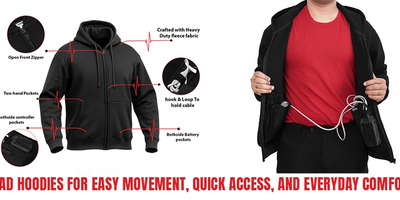
LVAD Device Explained: Benefits, Risks, and Recovery
What is an LVAD? LVAD is a battery-operated heart pump that is implanted through a procedure for a heart that does not function properly and does not supply enough blood to the body. LVAD surgery helps to improve the quality of life, which is otherwise severely affected. LVAD surgery is associated with some possibility of complications, but it offers even more benefits. Recovery after surgery usually depends on the health of the patient before surgery and the type of technique used during surgery.
What is an LVAD device? Or what is a LVAD heart pump?
A left ventricular assist device is used when a patient has a heart disease and fails to function normally. In normal conditions, the heart pumps blood from the left ventricle to the main artery, from where it goes to the whole body and supplies oxygenated blood to each organ and tissue. Now, let’s suppose the heart becomes weak and is not able to do its job. What will happen? The organs of the whole body will not get enough blood to work, which may cause even more complications. In such cases, your doctor will implant an LVAD heart pump through surgery to assist your heart. This is why it is called a Left Ventricular Assistive Device or LVAD heart pump. Sometimes, both ventricles need assistance, and LVAD implants are used on both sides of the heart and termed as a ventricular assist device or a biventricular assistive device.
The LVAD device is only implanted to compensate for a weak heart. So, it does not cure the underlying cause of the actual disease. You can also receive an LVAD implantation surgery if you are on the waiting list for a heart transplant or are not suitable to receive a donor's healthy heart. The LVAD device is being used widely today as it improves the symptoms of the patient and increases their life expectancy.
LVAD vs pacemaker: How are they different?
You may confuse LVAD with a pacemaker, but they are two different devices with two different purposes. Although they both are implanted in your heart and assist the heart in performing normal functioning, they both differ in their purpose. Here are the key differences in the devices:
|
LVAD |
Pacemaker |
|
Helps the heart to pump blood. |
Helps regulate the normal rhythm of the heart. |
|
It is a mechanical pump that improves the blood flow. |
It generates an impulse that improves the heartbeat. |
|
LVADs are implanted in patients with terminal disease of heart. |
Pacemakers can be used in less complicated conditions. |
|
LVAD is used as a temporary treatment. |
Pacemakers are used as a permanent treatment. |
|
The LVAD device does not correct an abnormal heart rhythm. |
Pacemakers do not help in pumping blood. |
What are the types of LVAD devices?
LVAD devices are available in first, second, and third generations. Each generation’s device has its own advantages. Here are some of the LVAD devices explained below:
Heartmate 3 LVAD:
Heartmate 3 is the most advanced type of LVAD device. It allows the centrifugal flow of the blood that operates magnetically. This type of device allows less damage to red blood cells, so it reduces the risk of blood clot formation and complications associated with it.
Heartmate 2 LVAD:
Heartmate 2 LVAD is a device that uses axial flow of pump to allow blood circulation. This type of device has the advantage of being smaller in size, which allows the surgeon to use this device in a range of patients, including pediatric and older populations.
HeartWare LVAD:
HeartWare LVAD is also a pump that allows centrifugal flow, but this device has been discontinued due to the high risk of neurological complications like stroke. However, LVAD battery vests are still in use for such devices to allow the patients to live with a high-quality life index.
Jarvik 2000:
This type of LVAD is still in its experimental phases. The Jarvik 2000 is an axial flow pump just like HeartMate 2, but it differs from the other devices in a way that it has a driveline behind the ear, whereas the other LVAD devices have drivelines in the abdominal area from where they exit the body.
Accessories you may need after having an LVAD Device:
If you have an LVAD implanted in your heart, then you may need to have some accessories to allow maximum mobility. LVAD apparel is specifically designed for you to carry components of the device, which may include batteries and the controller. These accessories provide you with convenience and limit your inability to do work freehand.
If you are also looking for premium-quality LVAD apparel, then LVADGear is a perfect choice as they provide all the accessories, including an LVAD bag and wearable accessories like LVAD life vests, tank tops, and medical shorts. A variety of LVAD Heartmate 3 accessories are also available here to make your life more comfortable, safe, and productive.
What are the benefits of the LVAD Device?
Before going for LVAD implantation, you may need to understand what does LVAD do and what its benefits are. Here are some of the benefits listed:
-
LVAD helps in reducing your symptoms associated with heart failure, such as chest pain, swelling, shortness of breath, and fatigue.
-
LVAD helps to perform the function of the heart more efficiently as compared to a weak heart without LVAD.
-
Improves other organ functioning by increasing blood supply to each organ, such as the liver, kidneys, lungs, brain, etc.
-
Improves quality of life by increasing the capacity to perform activities of daily living.
-
Reduces the chances of emergent situations.
-
It helps improve your mental health.
-
You will be able to walk long distances after LVAD implantation.
How to assess if LVAD is functioning?
If you have an LVAD implanted in your heart, you should know how to assess the functioning of the device. First, you have to make sure that the device is connected to the battery, which is a source of energy to pump blood. Listen to the sound of the LVAD device, which should be stable and high-pitched. Any unusual sound or no sound at all can be a sign that the LVAD device is not functioning at the moment.
What happens if LVAD battery dies? The LVAD controller also has alarms that inform the patient when the battery is low, the pump is not working, or allows limited perfusion. The controller has alarm beeps and sounds that inform the patient about the device's functioning.
What is a LVAD procedure?
The procedure of implanting an LVAD has a few steps and is described below:
-
You will be given general anesthesia so that you will remain unconscious throughout the surgery.
-
Your surgeon will make an incision according to the approach chosen. It can be open surgery or it can be a minimally invasive surgery, which only requires small incisions.
-
You will be converted to a heart-lung bypass machine to take over the heart and lung function.
-
The LVAD pump is then attached to your left ventricle and the main artery of the heart.
-
A driveline LVAD wire is passed through the abdomen to connect the pump to the controller and battery outside the body.
-
After completing the procedure, the device is tested, and then the incisions are closed with sutures.
How long does LVAD surgery take?
LVAD surgery usually takes 4 to 6 hours, but it generally depends on your condition before the surgery, or the type of surgery performed. You will stay in the ICU for 1 to 2 days and will be hospitalized for 1 to 2 weeks. You will also need training on how to manage the device before going home.
LVAD surgery recovery:
After LVAD surgery, you will recover in 5 to 8 weeks. But this time may vary according to the following factors:
-
Condition of the heart
-
General health of the patient
-
Presence of other diseases like diabetes, infection, and lung disease.
-
The number of complications that occur after the surgery
-
Age of the patient
-
Support and counselling
-
Participation in cardiopulmonary rehabilitation
-
Ability to understand and manage the device
What is the success rate of LVAD surgery, or what is the LVAD heart pump life expectancy?
Although LVAD does not treat the underlying cause of the heart disease, it still has high success rates in improving patients’ symptoms and their quality of life. So, how long can you live with an LVAD? About 80 to 85 % of patients survive one year, and around 70 to 75% can live up to 2 years. More than 50% of the patients are alive even after 4 years. The HeartMate 3 device specifically has a high LVAD life expectancy and a high chance of survival rate of 82% at two years.
What are the complications of LVAD?
Like any surgery, LVAD implantation also has some chances of complications. Although the chances of risks have decreased over the years due to the advanced medical procedures and minimally invasive surgery. However, there are still chances of complications, which may include:
-
Infection can occur in the driveline site where the LVAD wire exits the body. It also occurs during open-heart surgery.
-
Blood Clots can form and block important vessels, which can lead to life-threatening conditions like stroke.
-
Bleeding can also occur during open heart surgery or if the patient has a bleeding disorder.
-
Kidney failure
-
Device malfunctioning can also occur, especially after its lifespan. You may need a revision surgery for this.
-
Damaging of red blood cells due to the pumping action of LVAD, especially when the HeartWare device is implanted.
-
Right–sided heart failure occurs when the LVAD is implanted, and your right side of the heart may not be able to sync with it.
How can you minimize the chances of complications by following LVAD precautions?
LVAD implantation surgery indeed has some risks, but you can follow some guidelines to prevent them. Here is a guide to the precautions of complications after the LVAD procedure.
Take prescribed medications:
You need to take prescribed medications on time. For example, after surgery, antibiotics are prescribed to reduce the risk of infection. So, you must take all the medications to avoid unnecessary complications.
Take care of your driveline:
The driveline site is an area on your abdomen where the LVAD wire exits your body. You must keep this area clean and dry. Otherwise, it can catch the infection. Do not pull the driveline and prevent dropping or pulling.
Always carry an extra set of batteries with you:
Carry an extra set of batteries wherever you go because, if the battery dies, the pump will stop, and you may develop the symptoms again, just like before the surgery.
Things to avoid:
You cannot swim as the LVAD battery, driveline, and controller are not waterproof. Avoid high-intensity physical activities, as your heart is still learning to adapt to the change with the implantation of LVAD. Do not operate electrically operated machines to avoid the risk of electric shock and hence damaging the device.
Cardiopulmonary Rehabilitation:
Participate in cardiac rehab to improve your heart and lung health. You will feel better as it helps improve circulation. It will also be beneficial for you if you are going to get a healthy donor’s heart.
Stop your physical activity in these situations:
It is possible that your heart rate increases after doing a physical activity, but be aware of the situations where you experience dizziness, nausea, excessive sweating, breathlessness, or severe chest pain.
FAQs
Under what circumstances is a left ventricular assist device used?
Indications for LVAD may include heart failure due to cardiomyopathy or congenital heart disease, bridge to heart transplant, and bridge to recovery.
What is a LVAD wire?
An LVAD wire, also called a driveline which is a cable that connects the implanted LVAD pump inside the body to the external controller and power sources.
How long can a heart live outside the body?
A heart can live for 4 to 6 hours outside the body. However, the time can be extended with the help of newer technologies.
Can LVAD patients live alone?
It is not impossible to live alone for an LVAD patient, but it will be better to have at least one caregiver around all the time.
What is LVAD in medical terms?
LVAD is a Left Ventricular Assistive Device that helps the heart to pump blood from the left ventricle to the aorta and then to the whole body.
Prev post

What is a Heart Pump and How Does It Support Failing Hearts
Updated on 15 May 2025
Next post

What Is Congestive Heart Failure? Symptoms, Causes, and Treatments Explained
Updated on 28 April 2025








